How to Choose the Right Privacy Film for Each Room
Not every window in your home needs the same level of privacy. Some spaces require full visual coverage all day and night. Others benefit from subtle filtering that lets light in while softening exposure. In a city like Toronto, where homes are often built close together and large windows are a key feature, choosing the right privacy film for each room matters.
Window film is a smart way to create privacy without losing daylight or relying on heavy blinds. But with so many types available, it helps to understand what film works best for different parts of your home.
This guide breaks down how to choose the right privacy film based on the room, the use of the space, and your specific privacy needs.
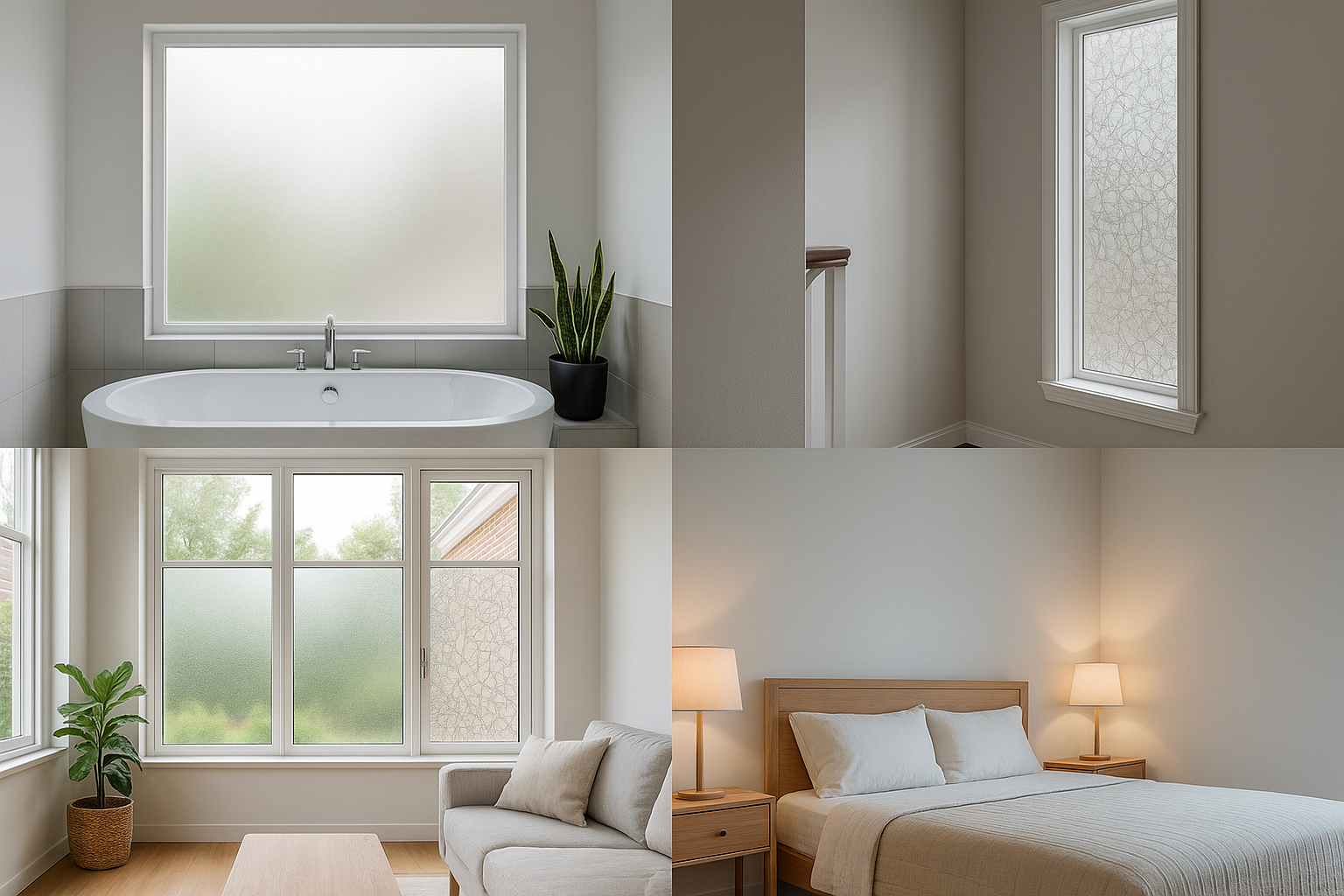
Understanding How Privacy Film Works
Privacy films come in several categories, each offering different levels of opacity, light control, and aesthetics. The most common types include:
- Frosted film: Creates a blurred, etched-glass effect that fully obscures visibility while letting in light
- Decorative patterned film: Offers design and partial privacy through stripes, gradients, or textures
- Reflective film: Provides daytime privacy by reflecting light, but does not offer night-time coverage
- Blackout or whiteout film: Blocks all visibility in both directions, day or night
- Tinted film: Offers mild visual filtering and glare reduction, but limited privacy on its own
Some films also reduce glare, block UV rays, or help manage heat, but for this guide, we’ll focus on privacy performance, room by room.
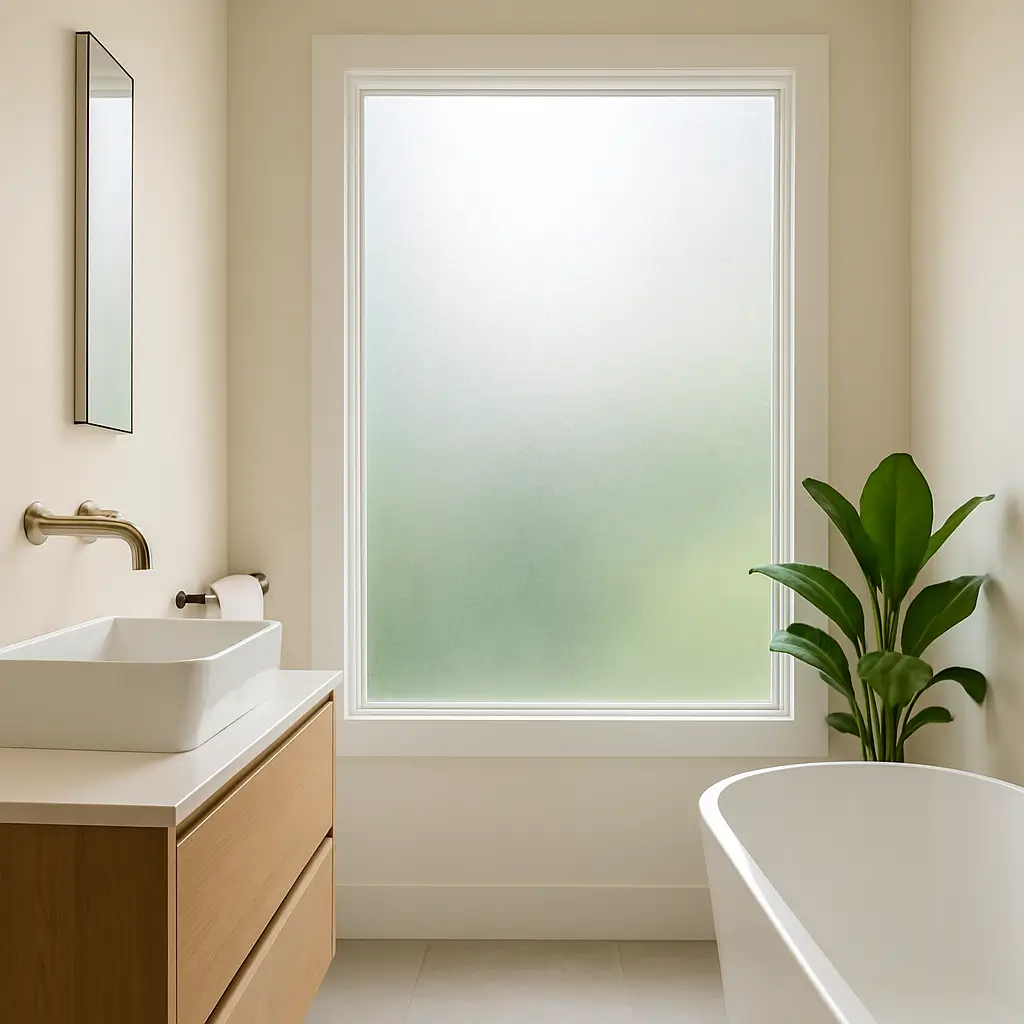
Bathroom Windows: Full Privacy Without Losing Light
Bathrooms need privacy 24/7, especially in homes with windows near sidewalks or side yards. At the same time, cutting out natural light can make bathrooms feel small or dark.
Best film type:
- Frosted window film
- Whiteout or blackout film for windows that face private areas or are rarely opened
- Decorative film with full-coverage patterns for a more stylized look
Why:
Frosted film maintains light while ensuring complete privacy at all times. It’s ideal for bathroom windows above tubs, toilets, or sinks, and it handles humidity well when properly installed.
Avoid:
Reflective or tinted film. These do not offer full privacy at night when bathroom lights are on.
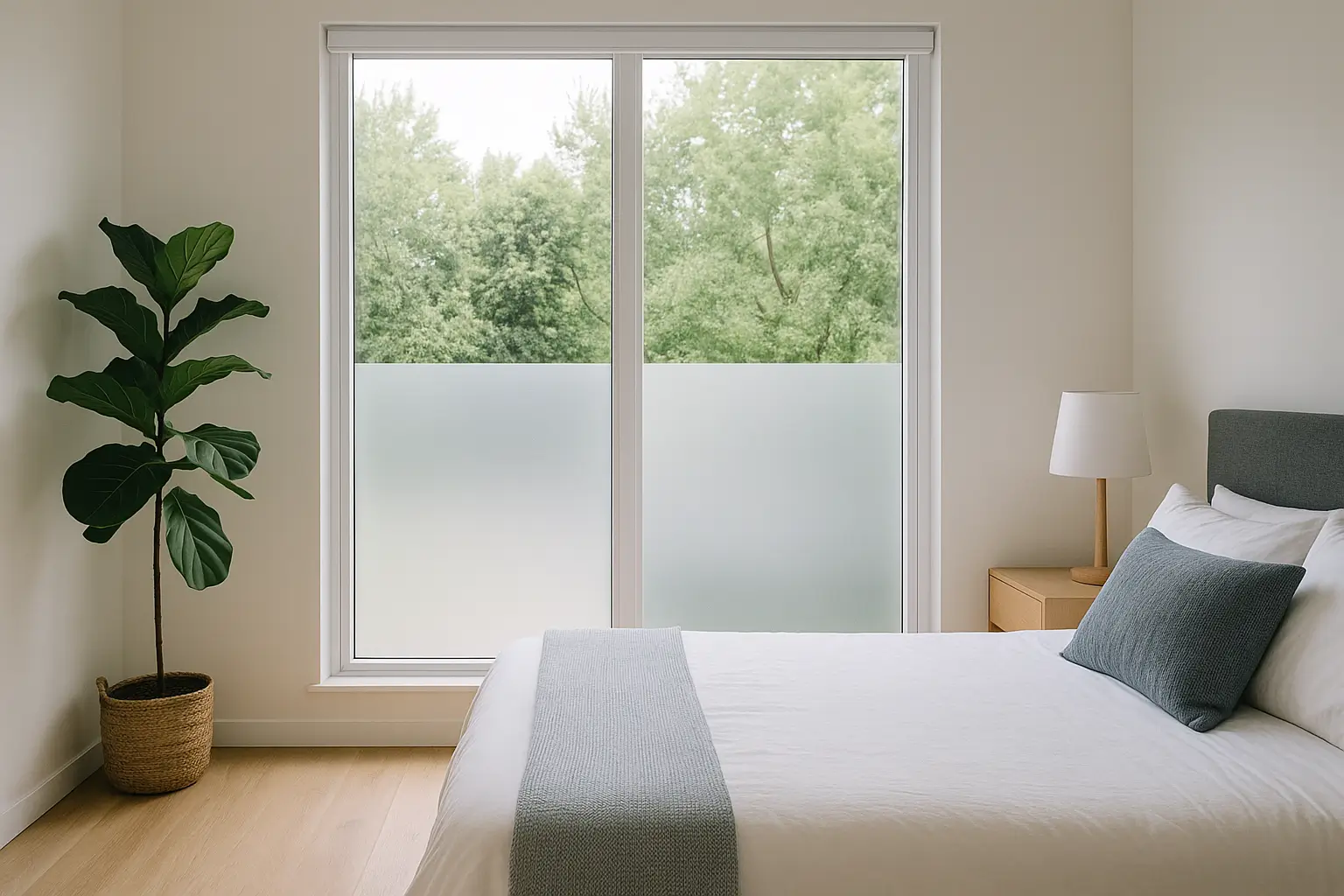
Bedrooms: Flexible Privacy That Works Day and Night
Bedroom privacy needs vary based on layout. Front-facing windows may need full coverage, while upper floors or homes with set-back windows might benefit from softer filtering.
Best film type:
- Gradient or decorative frosted film for lower panes
- Full frosted film for side windows or windows directly facing other homes
- Light privacy tint if paired with blinds or curtains at night
Why:
Bedrooms benefit from daylight, so choosing a film that maintains brightness while reducing visibility is key. For street-facing windows, full-privacy film helps prevent exposure when interior lights are on.
Toronto tip:
In many GTA homes, houses are only a few feet apart. Use frosted film for side-facing bedroom windows where curtains aren’t practical.
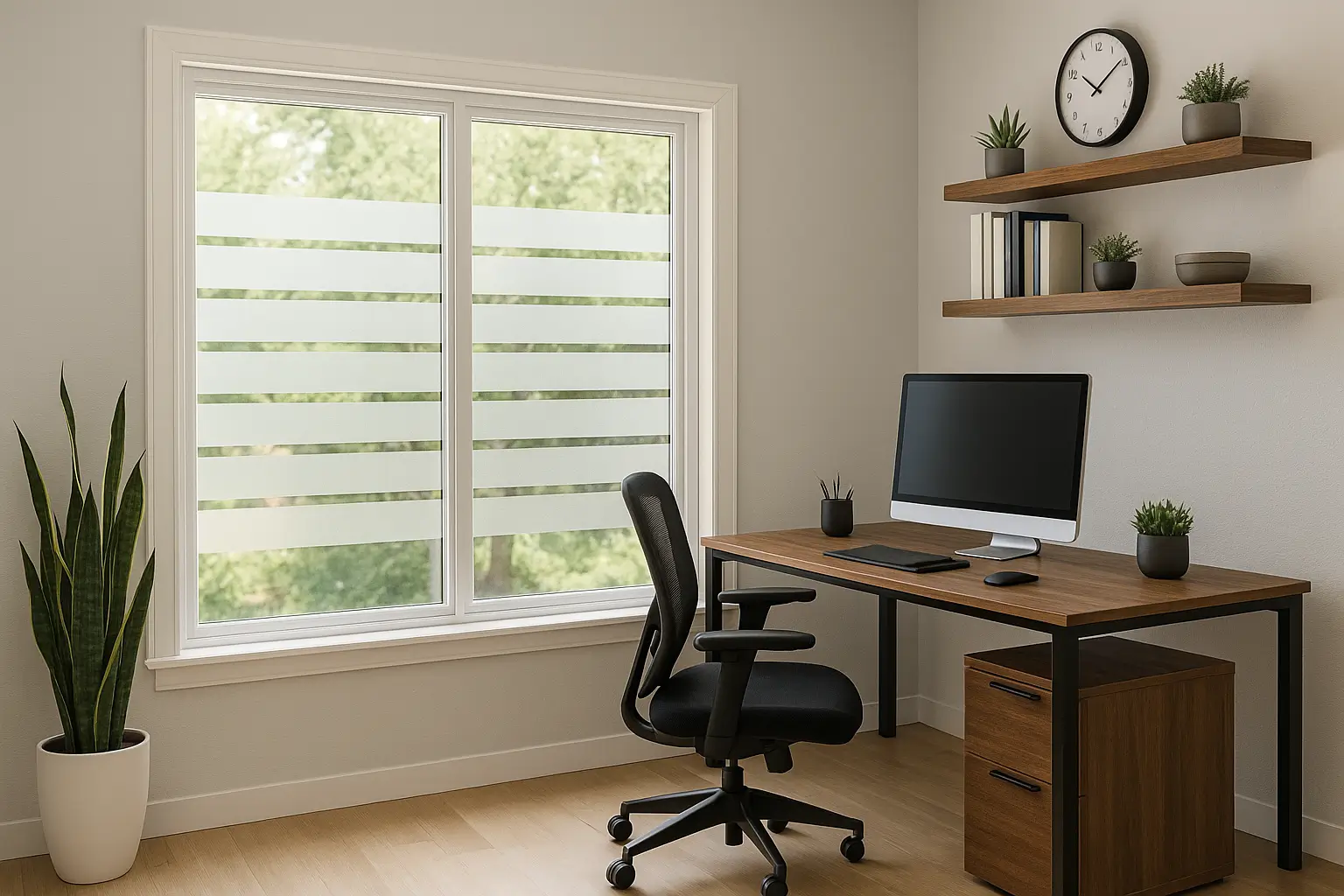
Home Offices: Glare Control and Daytime Privacy
Toronto residents working from home need a balance between privacy and visibility. Home offices with front-facing or corner windows often face glare issues as well.
Best film type:
- Decorative film with stripes or patterns that reduce visibility while maintaining light
- Neutral frosted film for rooms with heavy sun exposure
- Light-tinted film when paired with adjustable blinds
Why:
The goal in a home office is comfort and focus. Decorative films add visual privacy without closing the room off. Frosted film is useful if your workspace is in a converted den or corner of a living room.
Avoid:
Reflective film in work areas where privacy at night is still important.
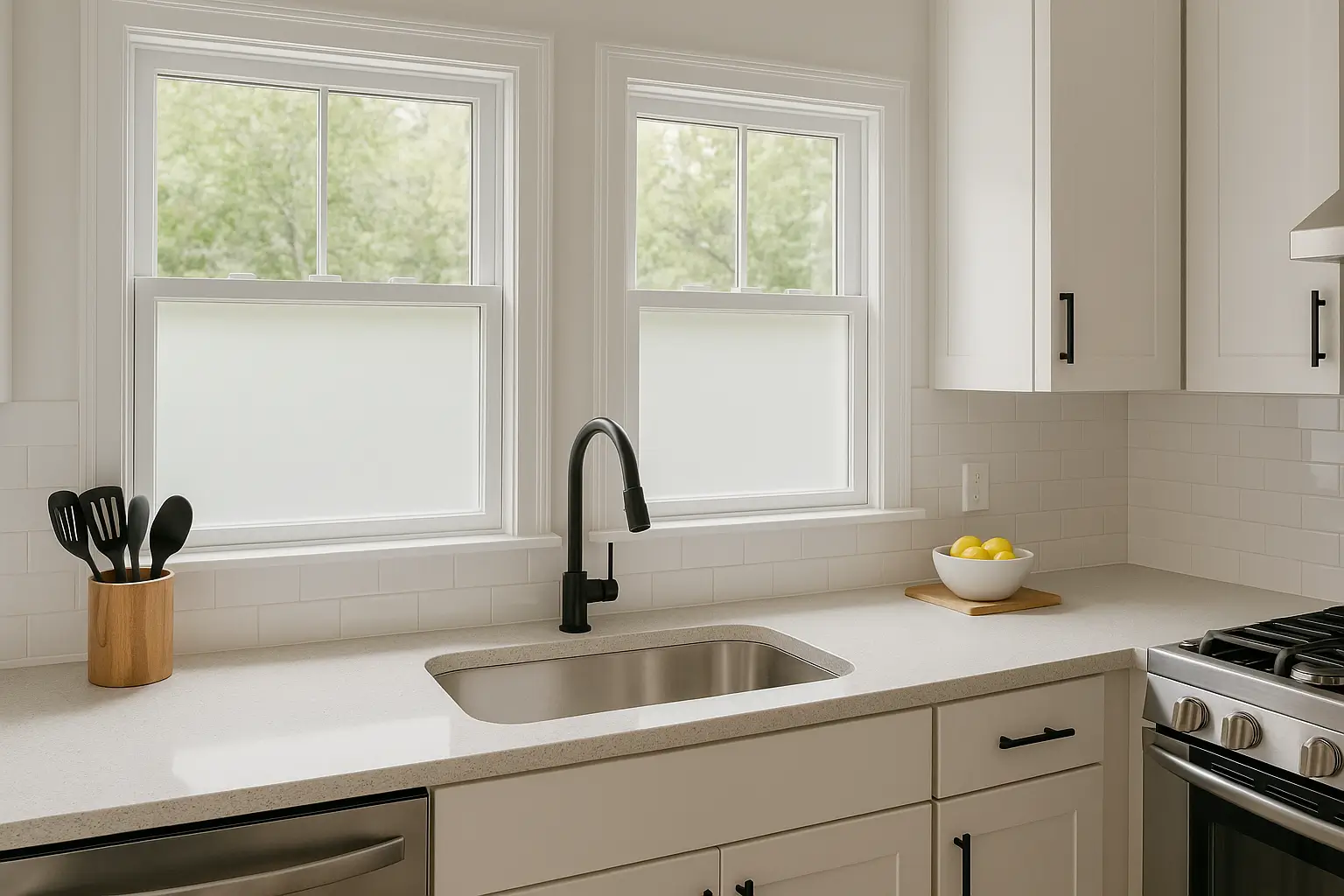
Kitchens: Privacy Where It’s Needed Most
Most kitchens don’t need full privacy across every window. Often, one or two small windows are visible from the backyard or street, especially in older Toronto homes with side entrances or corner lots.
Best film type:
- Partial frosted film applied to the lower half of windows
- Light-patterned film to soften exposure while keeping views
- Gradient film for modern kitchens with large or corner windows
Why:
Kitchens benefit from light and airflow, so full blackout isn’t ideal. A bottom-band frosted film or light pattern can block unwanted views without affecting brightness.
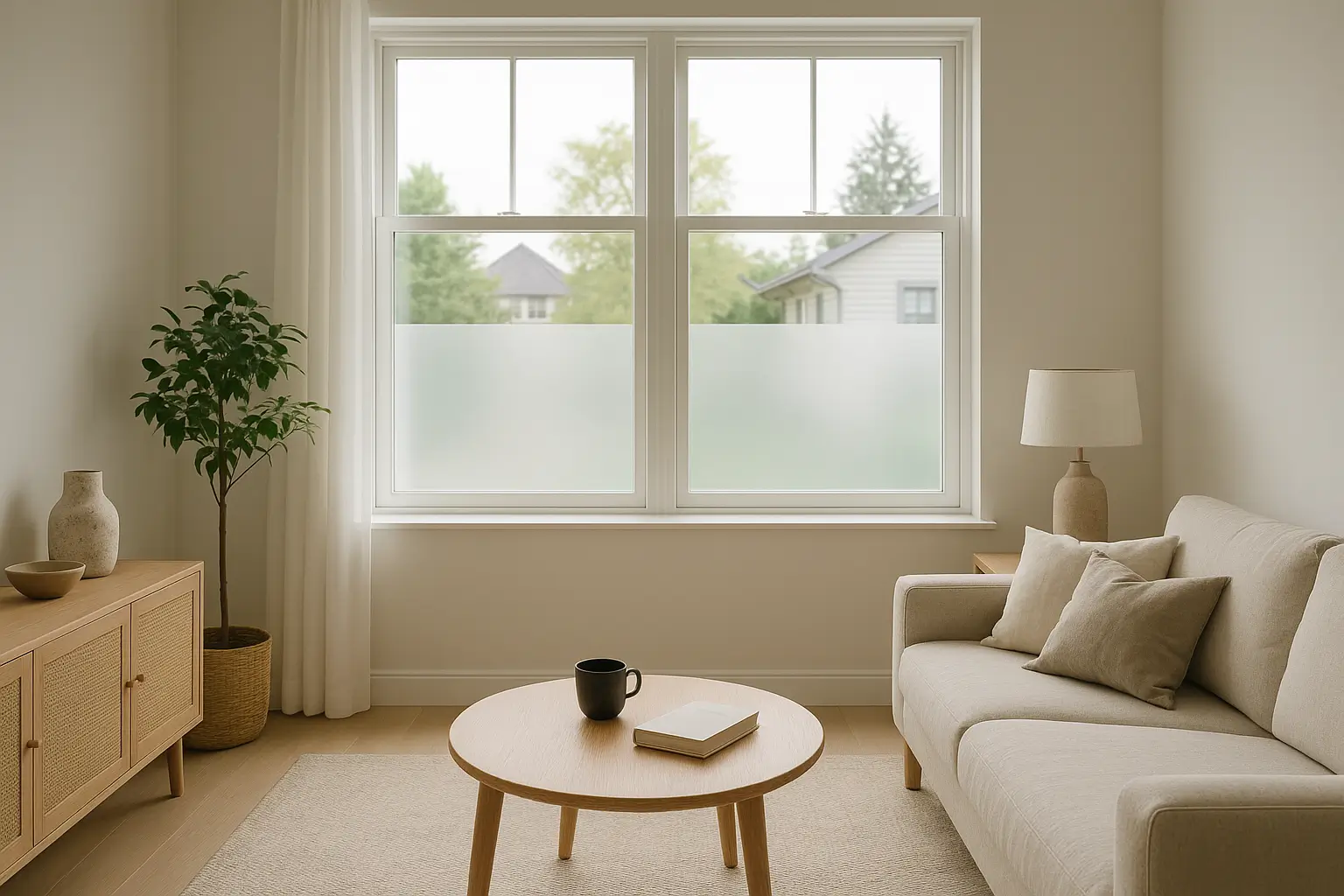
Living Rooms: Daylight and Discretion
Living rooms often feature large windows, which means lots of light, and also lots of visibility. In many GTA homes, front-facing windows are within a few feet of the sidewalk or a busy street.
Best film type:
- Frosted film on lower panes for bay windows or floor-to-ceiling glass
- Decorative film that provides partial privacy and visual texture
- Dual-use film that combines privacy with UV protection
Why:
Most homeowners want to maintain their view while reducing how visible their interior is. Films that obscure sightlines without eliminating daylight are ideal here. For full privacy at night, use film in combination with blinds or drapes.
Note:
Mirrored or reflective films only offer privacy during daylight hours and become transparent when lights are on inside at night.
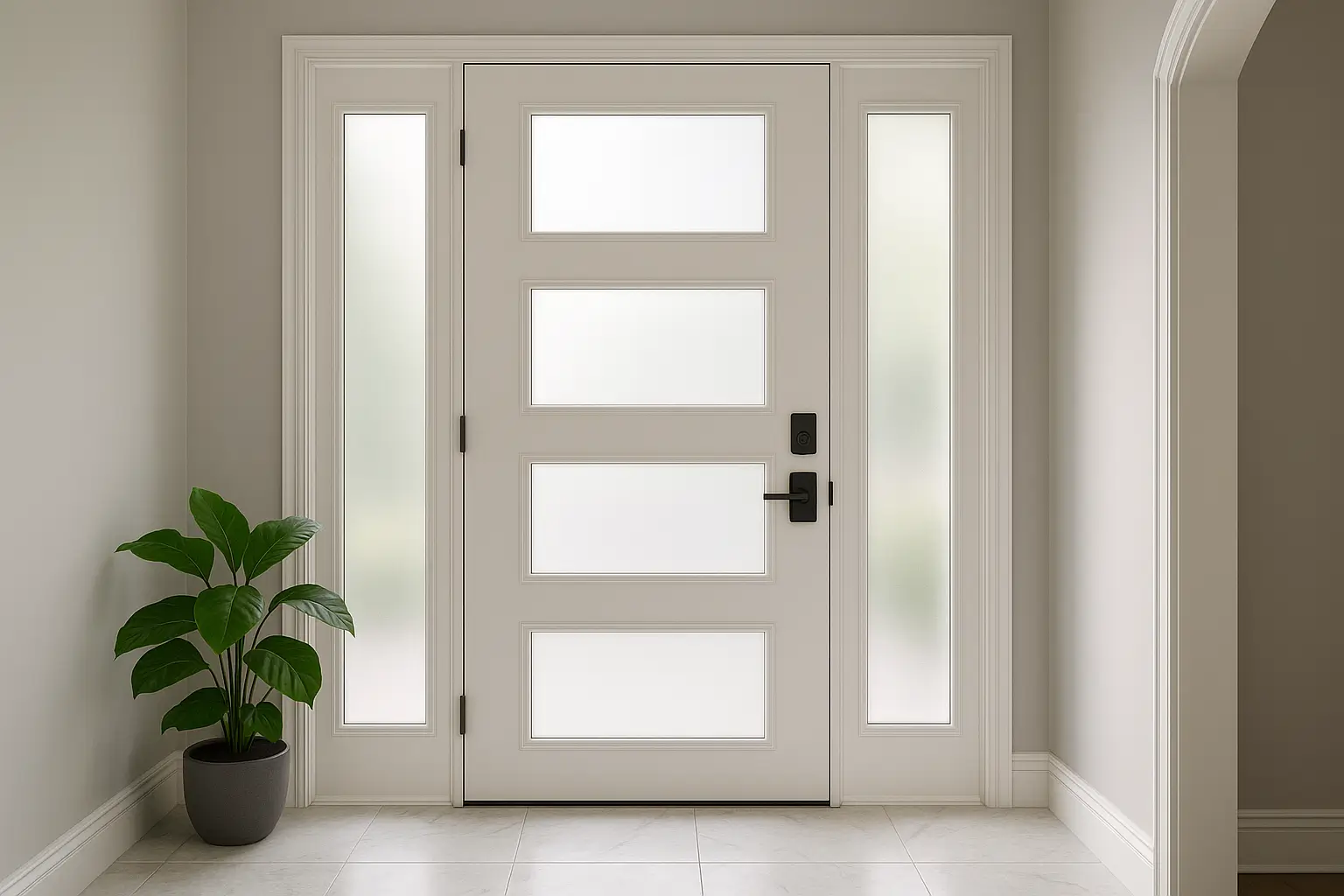
Entryways and Sidelights: Constant Coverage
Front doors with glass panels or sidelights are a common feature in many Toronto homes. These offer natural light to entryways, but also give strangers a direct view into your home.
Best film type:
- Full frosted film
- Decorative geometric or stained-glass-style film
- Whiteout film for complete visual blocking
Why:
Unlike other rooms, entryways are usually exposed day and night. You want consistent privacy and security. Frosted or patterned films add style and help keep the front of your home looking polished.
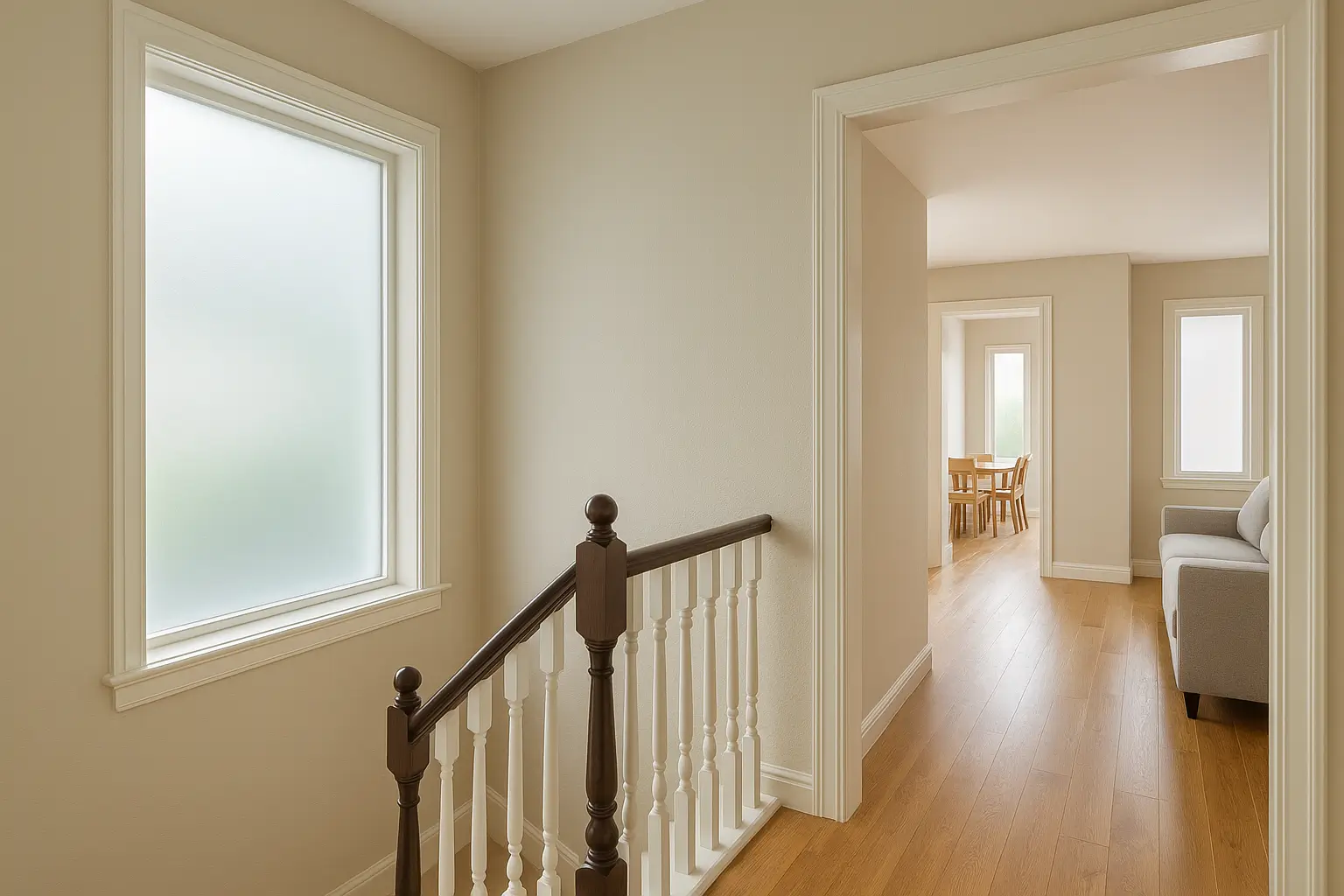
Shared and Transitional Spaces: Subtle Privacy
Hallways, stair landings, and open-concept spaces often include small or high windows that might not need full coverage but can still benefit from some visual filtering.
Best film type:
- Light decorative film
- Partial gradient or banded frost
- Textured film that softens but does not fully obscure views
Why:
These spaces benefit from daylight, and a minimal film can provide just enough diffusion to prevent clear sightlines without darkening the space.
Final Thoughts: Match the Film to the Room, Not Just the Window
Choosing privacy film isn’t about picking one product for the whole house. It’s about matching each room’s needs with a solution that balances comfort, natural light, and visual control.
To recap:
- Use frosted or whiteout film in bathrooms and side-facing bedrooms
- Try decorative or gradient film for offices, living rooms, and kitchens
- Avoid reflective or one-way films for spaces that need privacy at night
- Always prioritize consistency and lighting needs when choosing opacity
If you’re unsure, a professional window film installer can recommend options based on your floor plan, window orientation, and how your space is used day to day.
